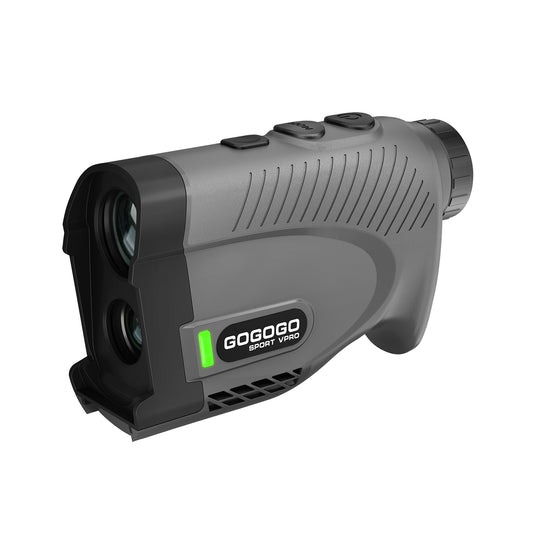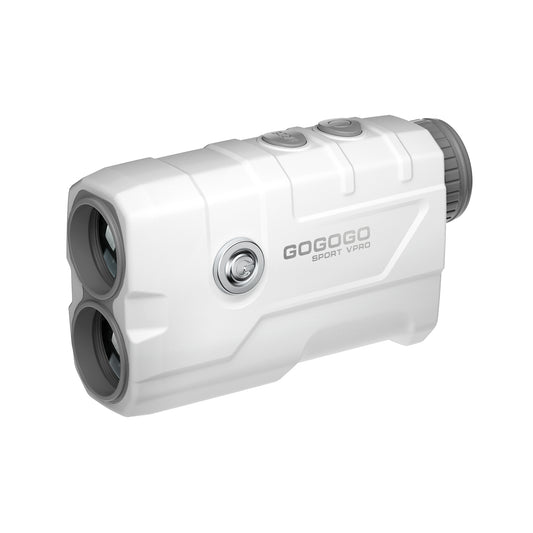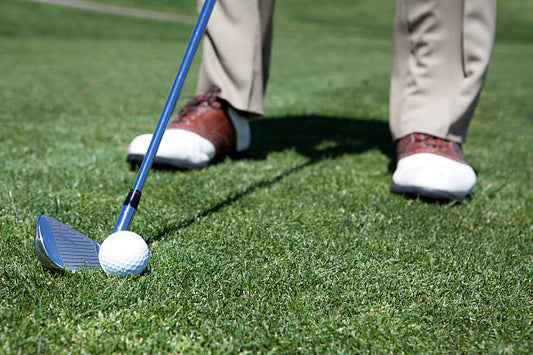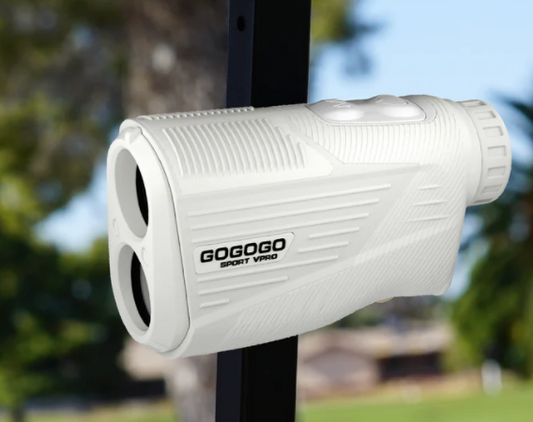With a plethora of distance measuring devices (DMDs) now available on the market, you may be asking yourself whether you should buy a Rangefinder or a GPS device.
As with any purchase, the answer depends on your budget, your knowledge of technology, and how you wish to carry a measuring device.
However, the products available to golfers tend to fall into two core options:
- A Golf Rangefinder – Point and press at a specific target
- A Golf GPS Device – Location-based, using satellite technology
We will look at the advantages and disadvantages of both options.

Golf Rangefinder – The Pros and Cons
Firstly, many golfers favor this option as it does not require relying on outside influences, such as signal quality. Additionally, it is an item they can use as and when needed, leaving it in their bag or cart when not in use.
However, others believe this ‘lower-tech’ option allows you to pinpoint specific objects like the flag itself, bunkers, streams, or out-of-bounds lines.
Most golf rangefinders only require traditional AAA batteries, although some can be charged at home before heading to the course.
A golf laser rangefinder emits a laser at a target, such as a flagstick or bunker. The laser reflects back, and the device calculates distance based on how long the light takes to return. This process happens in less than a second.
Rangefinders with slope adjustment also account for elevation, giving you an adjusted yardage based on the terrain.
Price Point – Golf rangefinders start at $60 and go up to $600.
Benefits
- Pinpoint accuracy: Provides exact yardage to the target.
- Precise targeting: Delivers specific information for accurate shots.
- Cost-effective: Low-cost entry point for devices.*
- Range: Wide range of price points and function options.
Disadvantages
- Usability: Requires you to take it out for each distance reading.
- Visual limitation: Cannot provide distances if the target is obstructed or not visible.
One of the most affordable options is the Gogogo Sport VPro, priced at approximately $70. It features 6x magnification, slope-switch technology, and pin-lock vibration, making it a solid option for casual golfers looking for functionality at a budget-friendly price.

The Golf GPS – Pros and Cons
Since the invention of mobile phones, society has grown accustomed to carrying technology in their pockets. In recent years, this has extended to the wrist, with the introduction of the Apple Watch in April 2015.
Moreover, it is predicted that it won’t be long before we use ‘implants’ to aid our everyday lives. For example, Elon Musk is already experimenting with microchips embedded in the brain.
When it comes to golf, distance measuring devices tend to be either handheld units, specialized watches (made popular by Garmin), or apps that you can add to your phone.
A golf watch (or handheld distance measuring device) connects to GPS satellites to pinpoint your location on the course. It matches this with its course map database to show distances to key spots, like the front, middle, and back of the green, as well as hazards.
The latest models available in pro shops offer more than just yardages—they include hole maps, slope-adjusted distances, scorekeeping, and shot tracking. Some even double as smartwatches with fitness tracking, sleep monitoring, and notifications for emails and texts.
Price Point – Golf GPS devices start at $100 and go up to $700.
We will look at both watch and handheld options.
Golf Watch:
Benefits
- Convenience: Instantly provides yardage by glancing at your wrist.
- Visual assistance: Works when you can’t see the target (e.g., blocked by trees or hills).
- All-day use: Includes off-the-course features, making it a multifunctional lifestyle tool.#
- Additional features: Some watches include hole maps and shot tracking, making them useful for game analysis.
Disadvantages
- Precision: Not as accurate as a rangefinder.
- Comfort: Some golfers dislike wearing a watch while playing.
The most expensive golf GPS unit on the market in 2024 is the Garmin Approach G80, priced around $700. This premium device not only functions as a full-featured handheld GPS preloaded with 41,000 courses, but it also integrates a launch monitor. This allows it to measure shot parameters like ball speed, club speed, and estimated carry distance.

In Summary
The options available to golfers are vast, but with a competitive market comes confusion.
As such, it is important that you do your research and consider the core reason you will be using the distance measuring device.
Ask yourself what your budget is and whether you require additional functions—bearing in mind that the more technology you use, the more battery power you will consume.
In short, if you love gadgets, the GPS option is for you.
However, if you want to spend your time concentrating on your golf, opt for a Golf Rangefinder!







![[2025] The Ultimate Guide to Pinseeker Rangefinders for Golfers](http://gogogosport.com/cdn/shop/articles/gogogo_sport_vpro_pinseeker_rangefinder.png?v=1757993796&width=533)